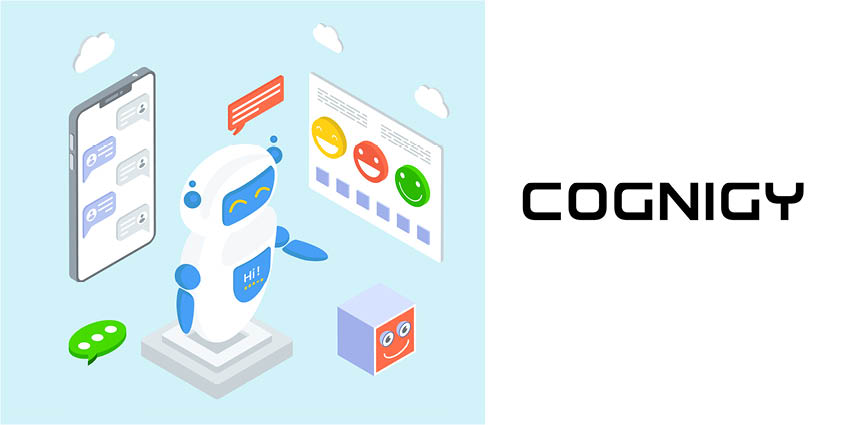54% of US online consumers believe that interacting with a chatbot will have a negative impact on their quality of life (Source: Forrester).
Statistics such as this make for difficult reading. Yet, they are scarcely surprising. After all, chatbots were the first form of conversational AI to hit the contact centre market, and misconceptions spread like wildfire.
However, since Forrester conducted this research in early 2019, a lot has changed. Not only has the technology evolved, but leading conversational AI vendors – such as Cognigy – are coming to the fore. Offering expert consultative services, these providers work closely with brands to develop solutions that not only complement business results but CX too.
Perhaps this trend is most evident in a State of Conversational Marketing report from Drift, which highlights that the willingness of consumers to use chatbots for purchases rose from 17.1% to 41.3% from 2019 to 2020 alone.
Nevertheless, there is a fine line between getting it right and wrong, no matter which channel a company deploys conversational AI.
To help companies toe that line, we have created a series of essential “dos” and “don’ts” with the help of Derek Roberti, VP Technology, North America at Cognigy.
Do: Clearly Define its Purpose
Whether a voice bot routes customers to agents or a chatbot resolves customer queries online, it must have a clear purpose.
If it is for self-service, fixate on which problems it will solve. Assess common contact reasons and uncover simple, transactional queries that plague the contact centre.
Avoid boiling the ocean. Tackle each query one at a time, starting with the issue that generates the most failure demand. Contact volumes will plummet quickly. Meanwhile, the agent experience will also improve, according to Roberti.
“Human workers are left with more engaging, interesting calls allowing them to become higher-performing employees who are more motivated by the inherent qualities of the job,” he says.
“Being able to automate a lot of the repetitive work that does not require human judgment, decision-making, or empathy adds to the time that human workforce has to do meaningful, challenging tasks”
Do: Consider Customer Preferences
Contact centres often make the mistake of forcing customers to interact with conversational AI. However, some will always seek out human support. Respect those preferences.
Of course, it is understandable to become preoccupied with what fits the needs of the business or simplifies the IT process. However, systems must support the ideal customer journey, not vice versa.
Making this point, Roberti says: “Give people the option of contacting a human agent but make it easier for them to do everything in a self-service fashion first.”
“That’s what conversational AI or conversational automation does. It provides a natural language interface and allows users to speak in their own terms, so they don’t need to worry about remembering which button to press, and they can quickly solve problems on their own”
Do: Build an Escalation Pathway
“Agents will still receive calls that need human decision-making, despite the implementation of well-developed self-service systems,” notes Roberti. As such, contact centres must enable a seamless transition to human support.
After all, it is impossible to train conversational AI to overcome every customer issue imaginable. It is, therefore, crucial to create rules that dictate when a query escalates to a live agent.
Such a strategy may go beyond the complexity of an issue. Contact centres can use AI to detect when a customer uses highly emotive language. In these scenarios, a human touch can prove decisive.
When the issue does escalate, the technology should enable the human agent to access a transcript of the customer-chatbot conversation. Doing so prevents the customer from repeating information, enhancing the customer service experience.
Don’t: Overload the IT Team
Conversational AI often requires lots of engineering resources. Even after installation, the IT team must complete a monitor, learn, optimise, and embed workflow to evolve the technology with the business.
However, many IT teams are currently struggling to cope with high workloads. Add to this the difficulty to recruit developer talent, and meeting high-level specifications in quick time is an almighty struggle.
Fortunately, there is another way, as no-code tools take the chatbot market by storm. Promoting such an approach to conversational AI, Roberti says: “Platforms that require developer or highly technical involvement often cause people to have missteps a lot more than platforms that require no coding experience.”
“Low-code, no-code platforms like Cognigy provide tools for non-technical users who can build, improve and adjust to their user experience, all without coding. From an investment point of view, this is a really good choice”
Don’t: Ignore the Significance of Integrations
A bot is only as good as its data supply. As such, integrations with contact centre systems are critical to successfully shift digital experiences away from human support and towards machines.
After all, premium conversational AI platforms use a combination of machine learning, predictive analytics, and statistical algorithms to make decisions. Without actionable data, these systems fail. Therefore, closely considering how the technology will fit into the contact centre ecosystem is crucial.
As Roberti stresses: “Organisations need to select a system that can easily fit into their current infrastructure, without a heavy lift. When you work with a platform like Cognigy, it’s designed to be able to fit right within your existing infrastructure without a lot of complex and expensive customisation”, adds Roberti.
Don’t: Overlook the Importance of Monitoring
Goal completion rates, bounce rates, and customer satisfaction scores are examples of excellent metrics that reflect the success of a conversational AI implementation.
These enable CX teams to get inside the customer’s head and understand how they think. As a result, they can continually develop better, more seamless experiences.
Such a process of monitoring, learning, and optimising is the easy part of developing a winning conversational AI solution. Yet, according to Roberti, it often slips through the net.
“Companies frequently forget to do ongoing monitoring, especially after the initial rollout of the software,” he says. “This process is crucial to see how people are interacting with an automated agent or a virtual agent.”
“Regular monitoring allows organisations to fine-tune their conversational AI in almost real-time and see instant improvements in user experience”
A Final “Do”: Team Up with Cognigy
Unlike other platforms that design conversations around technology, Cognigy offers a unique approach to conversational AI by designing around the conversation.
Discover more about their game-changing use of conversational AI by visiting the Cognigy website.







